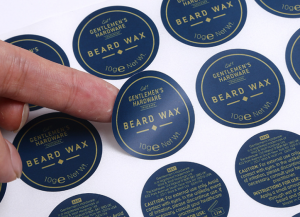Self-adhesive labels are widely used in logistics, retail, food packaging and other industries because of their convenience and strong stickiness. However, in actual use, the problem of label falling off or residual glue stains often occurs, affecting the appearance and user experience of the product. This article will analyze how to avoid the stickiness problem of self-adhesive labels from three aspects: stickiness principle, influencing factors and solutions.
1. Stickiness principle of self-adhesive labels
The stickiness of self-adhesive labels mainly depends on the performance of adhesives. Adhesives are usually made of materials such as acrylic, rubber or silicone, and their adhesion is affected by factors such as temperature, humidity, and surface material. The ideal stickiness should ensure that the label is firmly attached after lamination, and no residual glue is left when it is removed.
2. Key factors affecting stickiness
Surface material: Surfaces of different materials (such as plastic, glass, metal, paper) have different adsorption capacities for adhesives. Smooth surfaces (such as PET and glass) may lead to insufficient adhesion, while rough or porous surfaces (such as corrugated paper) may cause excessive glue penetration, which may leave residual glue when removed.
Ambient temperature and humidity: High temperature may cause the glue to soften, causing the label to shift or fall off; low temperature may make the glue brittle and reduce its stickiness. Excessive humidity may cause the label to get damp, affecting the adhesion effect.
Improper selection of glue type: Permanent glue is suitable for long-term pasting, but it is easy to leave glue when removed; removable glue has weaker viscosity and is suitable for short-term use.
Labeling pressure and method: If the pressure is insufficient during labeling, the glue may not fully contact the surface, affecting the stickiness; excessive squeezing may cause the glue to overflow and leave residue when removed.
3. How to avoid labels falling off or leaving glue?
Choose the right type of glue:
Permanent glue is suitable for long-term fixation (such as electronic product labels).
Removable glue is suitable for short-term use (such as promotional labels).
Low-temperature resistant glue should be used in frozen environments, and heat-resistant glue should be used in high-temperature environments.
Optimize labeling process:
Ensure that the labeling surface is clean, dry and oil-free.
Use appropriate labeling pressure to evenly distribute the glue.
Appropriately press after labeling to enhance adhesion.
Control storage and use environment:
Avoid storing labels in high temperature, high humidity or extremely low temperature environments.
After labeling, let the labels cure in a suitable environment (such as standing at room temperature for 24 hours).
Testing and verification:
Before large-scale use, conduct small batch tests to observe the stickiness performance in different environments.
Choose label materials that match the substrate, such as PE, PP and other special materials require special glue.
The stickiness problem of self-adhesive labels is not unavoidable. The key lies in correctly selecting the type of glue, optimizing the labeling process and controlling environmental factors. Through scientific testing and adjustment, the phenomenon of label shedding or glue retention can be effectively reduced, and the reliability and aesthetics of product packaging can be improved.
Post time: May-16-2025


